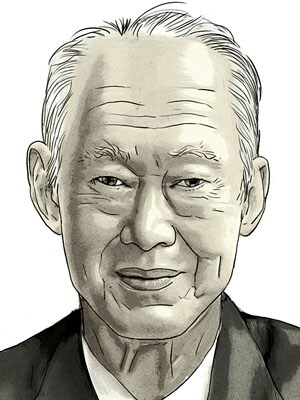
China and India: Different Wants, Different Needs
India's growing population is a stark contrast to a greying China
China’s imploding population contrasts with India’s increasing one. China currently has 1.35 billion people, and its one-child policy—put into effect in 1979—is still in force. Every child must have a household registration document, without which education and employment aren’t possible. But China’s total fertility rate (the average number of children a woman has during her childbearing years) is around 1.6, and rapidly declining. This spells future problems for China, as the replacement rate needed to keep its population stable is 2.1.
More than 20 of China’s top demographers, sociologists and economists have submitted petitions to the government advocating ending the one-child policy. But even if its leaders wanted to top up the population with immigrants, China wouldn’t be able to find the numbers needed to send its population into a stable replacement mode.
The mind-set behind the one-child policy dates back to the days following the Cultural Revolution, when China suffered huge shortages in food and resources and people believed a population explosion loomed. Unfortunately the population decline this policy has brought about will be difficult to reverse. There’s little likelihood that China’s women will return to a TFR of 2.1, as highly educated women who earn large salaries don’t want to be burdened with two or more children. They marry later and delay childbirth in order to enjoy life, especially travel to foreign countries. Worse, many women do not marry at all. Some estimates are that 10 percent of women in China remain single. In Singapore it’s 20 percent.
In every country—developing and developed—the older the workforce, the lower the overall level of entrepreneurship and creativity.
The contrasts between China and India are stark. India’s population is 1.21 billion, and it has a TFR of 2.5. Estimates are that India’s population will reach 1.4 billion by 2026. Population problems in India centre on whether there will be adequate homes, schools, education and health facilities for all of these people.
India has more than 2,000 ethnic groups, with more than 400 spoken indigenous languages. Each state elects its own chief ministers; therefore, whoever is in charge in Delhi doesn’t have complete control and influence over events in individual states.
India recognises 22 languages, but an estimated 41 percent of the population speaks Hindi and about 10 percent, English. A candidate sitting for the nationwide Civil Services Examination can opt to use any of the recognised languages for the test, except in the mandatory English and optional foreign language sections. India’s constitution mandates that the two official languages for intrastate and interstate communication be Hindi and English. But no prime minister in Delhi, no matter what language he chooses, can be understood by more than a limited segment of the population.
Mono-ethnic China has one written language with different pronuncia- tions, depending on the region. But leaders in Beijing can be heard and understood by the whole nation.
VITAL FOR A VIBRANT ECONOMY
I’ve just returned from visiting Japan and Hong Kong. Japan’s TFR is 1.39; South Korea’s, 1.23; Hong Kong’s, 1.11; and Singapore’s, 1.20. I found Japan to be aging but Hong Kong to be vibrant.
I can’t help but believe this is in part because more than 220,000 people commute daily from China to Hong Kong and many of Hong Kong’s people have second homes across the border on the mainland.
Singapore takes in immigrants from China, India and the rest of the region, which contributes to its remaining a dynamic economy and society. Hong Kong’s population is legally and illegally increased by immigrants. Japan, on the other hand, is a nation of pure-bred Japanese. It refuses migrants, so its population is shrinking and aging—a difficult trend to reverse once a country’s birthrate has declined so rapidly.
(This story appears in the 30 November, -0001 issue of Forbes India. To visit our Archives, click here.)





